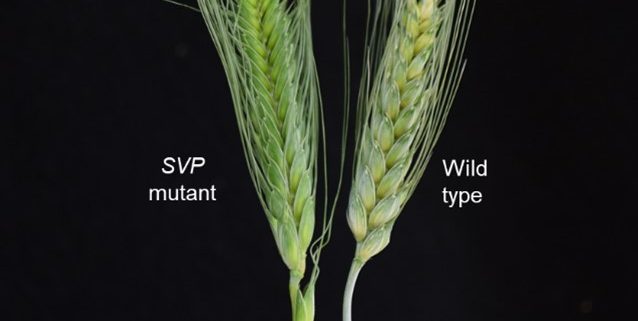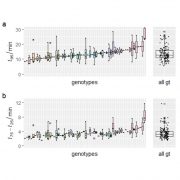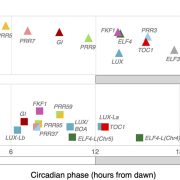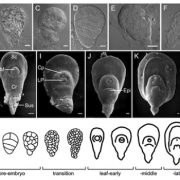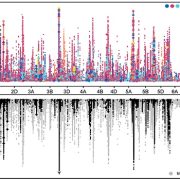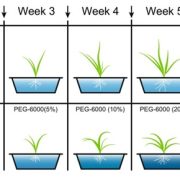Engineering a wheat spike
Li et al. investigated genes regulating wheat spike development and found that SQUAMOSA and SVP genes control the development of normal spikes. Plant Cell. https://doi.org/10.1093/plcell/koab243
By Jorge Dubcovsky, Kun Li and Juan Manuel Debernardi, University of California, Davis, CA, USA
Background: More than 750,000,000 tons of wheat grains are produced globally each year. These grains are produced within an inflorescence known as the spike, which has multiple lateral secondary inflorescences called spikelets. The number of spikelets, and consequently the number of grains per spike, is determined when the terminal spikelet is formed. We previously showed that developmental genes of the SQUAMOSA family are essential to promote the formation of the terminal spikelet and for spikelet development. Therefore, combined SQUAMOSA mutants have more spikelets but they are transformed into vegetative organs. Here we show that another group of developmental genes of the SVP family contributes to spikelet number though their interactions with the SQUAMOSA genes without having negative effects on spikelet characteristics.
Question: How do the SQUAMOSA genes control spikelet number and spikelet development in wheat to engineer more productive wheat spikes?
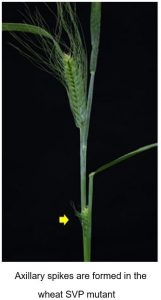 Findings: By comparing the expression of genes in SQUAMOSA mutants vs. normal wheat plants during spike development, we discovered three genes of the SVP family that were expressed at very high levels in the SQUAMOSA mutants. Combined SVP mutants showed a higher number of spikelets per spike, delayed heading and shorter plants. When one SVP mutant was combined with the SQUAMOSA mutants, it reduced the vegetative characteristics of the spikelets. Interestingly, the SVP mutant exhibited axillary inflorescences in the elongating stem (like a maize cob) that are not observed in normal wheat (see figure). We propose that SVP genes control the formation of axillary spikes and spikelets. We also propose that SQUAMOSA-SVP interactions are important to promote heading, formation of the terminal spikelet, and stem elongation in early flowering, and that down-regulation of SVP genes is then necessary for normal spikelet and floral development.
Findings: By comparing the expression of genes in SQUAMOSA mutants vs. normal wheat plants during spike development, we discovered three genes of the SVP family that were expressed at very high levels in the SQUAMOSA mutants. Combined SVP mutants showed a higher number of spikelets per spike, delayed heading and shorter plants. When one SVP mutant was combined with the SQUAMOSA mutants, it reduced the vegetative characteristics of the spikelets. Interestingly, the SVP mutant exhibited axillary inflorescences in the elongating stem (like a maize cob) that are not observed in normal wheat (see figure). We propose that SVP genes control the formation of axillary spikes and spikelets. We also propose that SQUAMOSA-SVP interactions are important to promote heading, formation of the terminal spikelet, and stem elongation in early flowering, and that down-regulation of SVP genes is then necessary for normal spikelet and floral development.
Next steps: The induced mutations in the SVP genes, and some recently discovered natural mutations in these genes, increase the number of spikelets per spike. These mutants are useful tools for wheat breeders to increase the number of grains per spike and wheat productivity. We are currently introgressing these variants into commercial wheat varieties to test their effects on total grain yield.
Kun Li, Juan M. Debernardi, Chengxia Li, Huiqiong Lin, Chaozhong Zhang, Judy Jernstedt, Maria von Korff, Jinshun Zhong, Jorge Dubcovsky. (2021). Interactions between SQUAMOSA and SHORT VEGETATIVE PHASE MADS-box proteins regulate meristem transitions during wheat spike development. Plant Cell. https://doi.org/10.1093/plcell/koab243


